I used to dread teaching adding on an open number line to my 2nd grade students. When they tried adding 2-digit numbers on a number line, their numbers and jumps would get all jumbled up. They did not get accurate answers when adding on an open number line. I knew I needed to change something for my students to be successful with this strategy.
While brainstorming ideas, I thought about the patterns students need to know in order to be successful with adding 2-digit numbers on a number line. I also thought about the things that made this strategy difficult for young students, and I came up with ideas to help them.
I have a free guide that outlines all the patterns and common mistakes for each of the 2-digit addition and subtraction strategies. Grab your free copy here: The Ultimate Teaching Guide for 2-Digit Addition & Subtraction Strategies
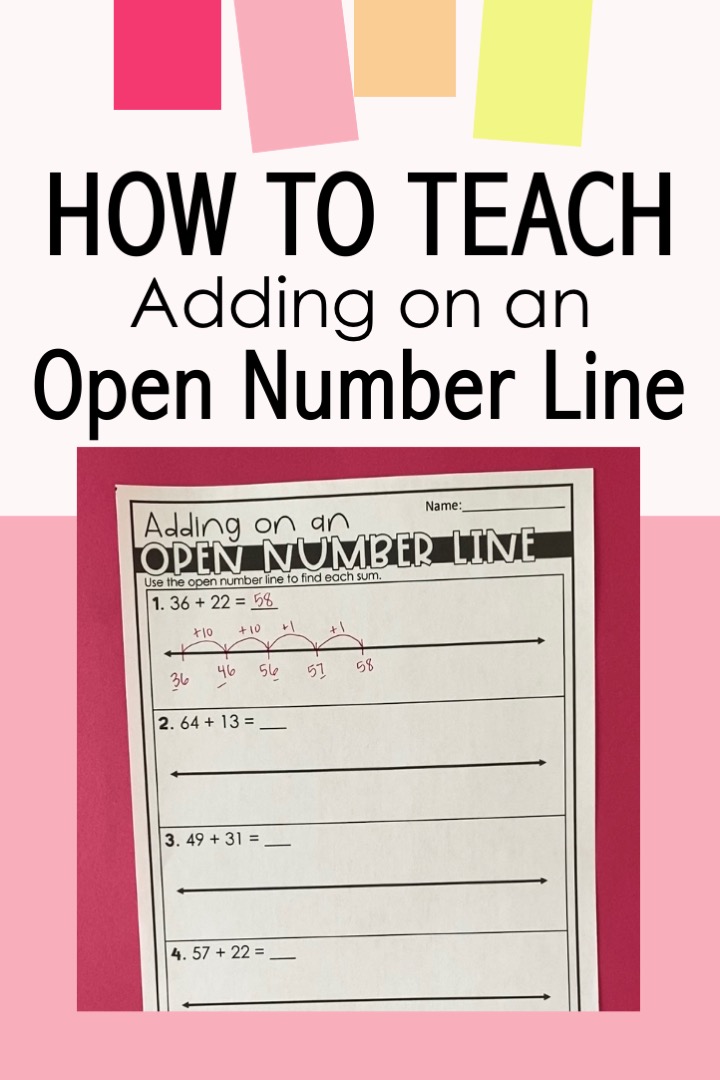
Here’s how I teach adding on an open number line so that 2nd graders don’t get caught up in all the steps.
So today, I’m sharing what students need to find success when adding on an open number line with 2-digit numbers.
It’s important to note that students do best with 2-digit addition and subtraction strategies when they have a solid foundation in math fact fluency. I share my best tips for fact fluency here in my free workbook for 1st and 2nd grade students: The 7 Steps to Ensure Math Fact Fluency
If you’re a parent who has a child struggling with math, you’ve got to check out Learner. Learner is an online tutoring platform that sets students up for success. To get started take a short quiz about your child’s needs. Then Learner’s Success Management Team reviews that and matches your child with the perfect tutor. Get your $25 trial here.
Okay, let’s first get into the patterns students need to know in order to be successful with 2-digit addition on an open number line.
Adding on an Open Number Line
When students are adding on an open number line, they are making jumps of tens and ones. That means they need to add tens on an open number line and then need to add ones on an open number line. Students need to know the patterns involved when adding 10 to a 2-digit number and 1 to a 2-digit number.
When students know these patterns, they easily use mental math. They don’t get caught up in the steps involved when adding on an open number line.
So what are these patterns and how do we help students discover them?
I first display a number using place value blocks. Then I add a one block and have students give them the answer. Then I do the same thing with tens by adding a 10 rod. Then I give a list of equations adding one to a 2-digit number and a list of equations adding ten to a 2-digit number. Students solve these with me using a hundreds chart. Then I ask students, “What patterns do you see?”
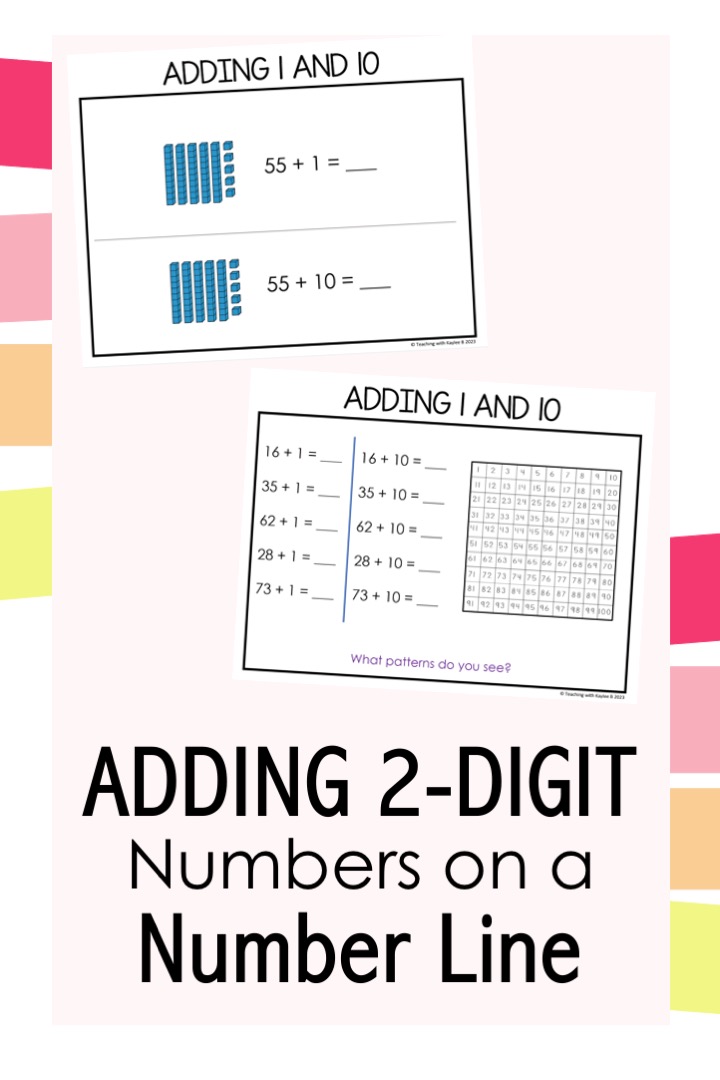
When adding 2-digit numbers on a number line, I like to help my students to use patterns to solve.
They will see that when we add 1, the number in the ones place increases by 1. And they will see that when we add 10, the number in the tens place increases by 1.
But what about when we have a 2-digit number that ends in 9 and we add 1 to it. I like to be funny with the kids and show an equation like this, 29+1=210. They know what is so wrong and giggle!
I tell students that when we add 1 to a number that ends with 9, we have a special nines pattern. To help students discover this pattern, I have them solve a list of these kinds of equations using a hundreds chart. Then I simply ask them, “What patterns do you see?”
Students will notice that the number in the tens place will increase by one, and the number in the ones place will become a zero.
These are the patterns students need to know in order to be successful adding 2-digit numbers on a number line.
To easily teach these patterns I project display pages and use them as slides. They have all the visuals and equations I need. They’re so helpful because they guide me on what to do and say. Find the display pages I use here.
Now let’s get into the process of adding 2-digit numbers on a number line.
Adding 2-Digit Numbers on a Number Line
Using the display pages again, I project an open number line and the addition equation: 56+31. I model making a small line, or a “tick”, on the left side of the number line. Underneath, I write our starting number which is 56. Then we look at the number we are adding, which is 31. I ask students how many tens are in 31. They say 3, so I make 3 tens jumps and label them “+10” up above the jumps. Down below we need to write the numbers when we add 10.
I remind students that we can use our tens patterns we learned before. So ten more than 56, is 66. And 10 more than 66 is 76. 10 more than 76 is 86. We label those numbers underneath the number line.
Now it’s time to add ones. I ask students how many ones are in 31. They tell me 1. So we make one jump and label it “+1” up above. Then I like to make things fun by telling students to “turn their brains to ones” so that it’s easier to use our “ones pattern.” I pretend I am turning a switch on my head and I like to make a little click noise. Students do this with me and they think it’s so fun! Then we use our adding one pattern. One more than 31 is 32. So we label 32 down beneath the number line. And that gets us to our answer.
I model a few more examples and get students involved by asking them questions and having them “switch” their brains back and forth from tens and ones.
Then it’s time to get students their own practice. I like to do this with an adding on an open number line worksheet.
Adding on an Open Number Line Worksheet
I pass out a worksheet and students complete it. As students are solving, I’m walking around giving support when needed. I also take a mental note of common mistakes and misconceptions. For example, I might see that students are making their jumps way too small and writing their numbers way too big underneath. This makes their numbers get all jumbled up underneath. So when I call students’ attention back, I will model making nice big jumps so my numbers can fit underneath nicely.
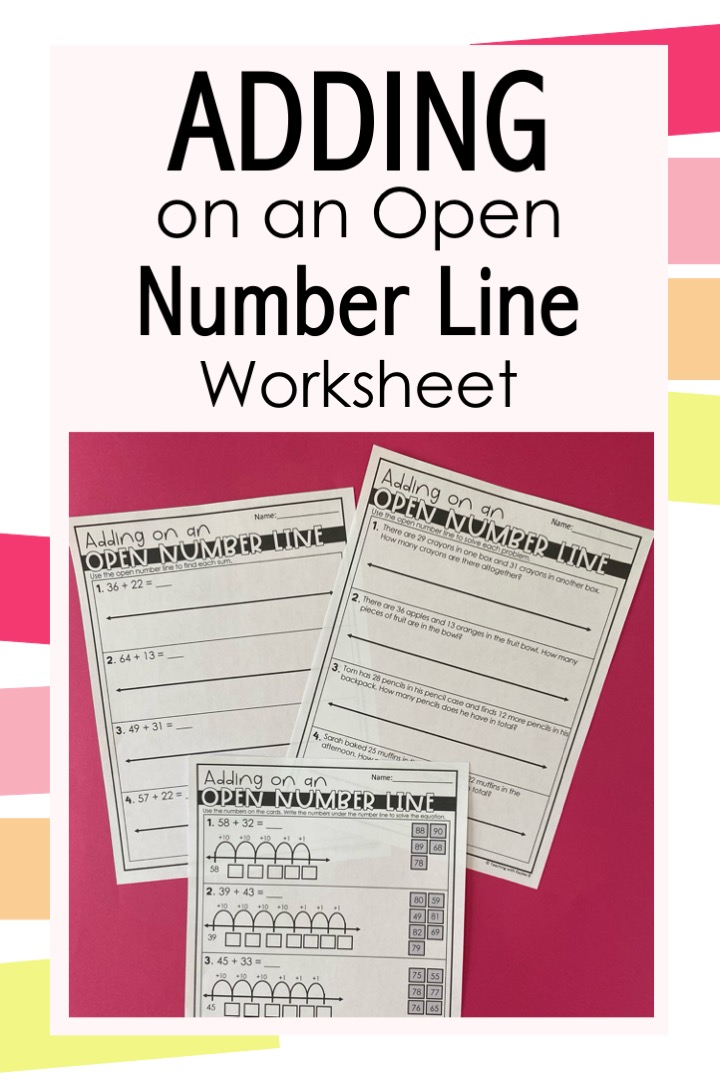
Having students complete an adding on an open number line worksheet helps them get the practice they need to be successful when adding 2-digit numbers on a number line.
Then I’ll give my students another adding on an open number line worksheet. This time they do it without me walking around. I’m actually waiting at our classroom table. When students finish, they line up by me. I do a quick check over their work and help them fix any mistakes. When their work looks good, I give them a big check mark with one of my smelly markers. Students then put their page in their Take Home Folder.
I love checking work in this way because students can get immediate feedback. And an added plus, I don’t have to correct these worksheets after school! I like how their parents can see the page they did that evening and know how their child is doing with the strategy.
After students put their worksheet away, I want them to have extra practice with adding on an open number line. So I have them do a scoot activity with a partner.
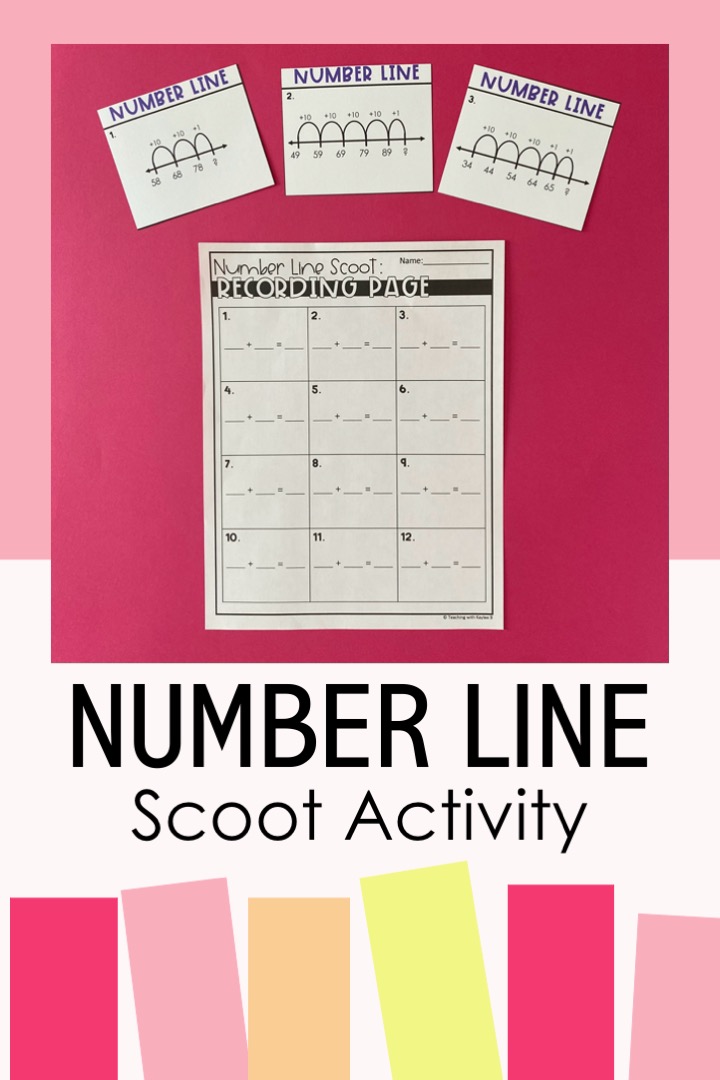
Help students practice adding using an open number line in a fun way with these task cards and scoot activity.
I have task cards taped up around my classroom. Students have a recording sheet. They go around the classroom and solve the problems with their partner. The task cards actually have solved number lines on them. Students have to write the matching equation that goes with each number line.
When students finish, I have them check their work with an answer key I set out. They use a red pen to fix any mistakes and then they put their page in their Take Home Folder.
Then students work with that same partner to complete an open number line puzzle activity. These are sheets of paper when a number line, but the numbers underneath are missing. Students have to put the number cards where they should go on the number line. This helps reinforce those add 10 and add 1 patterns.
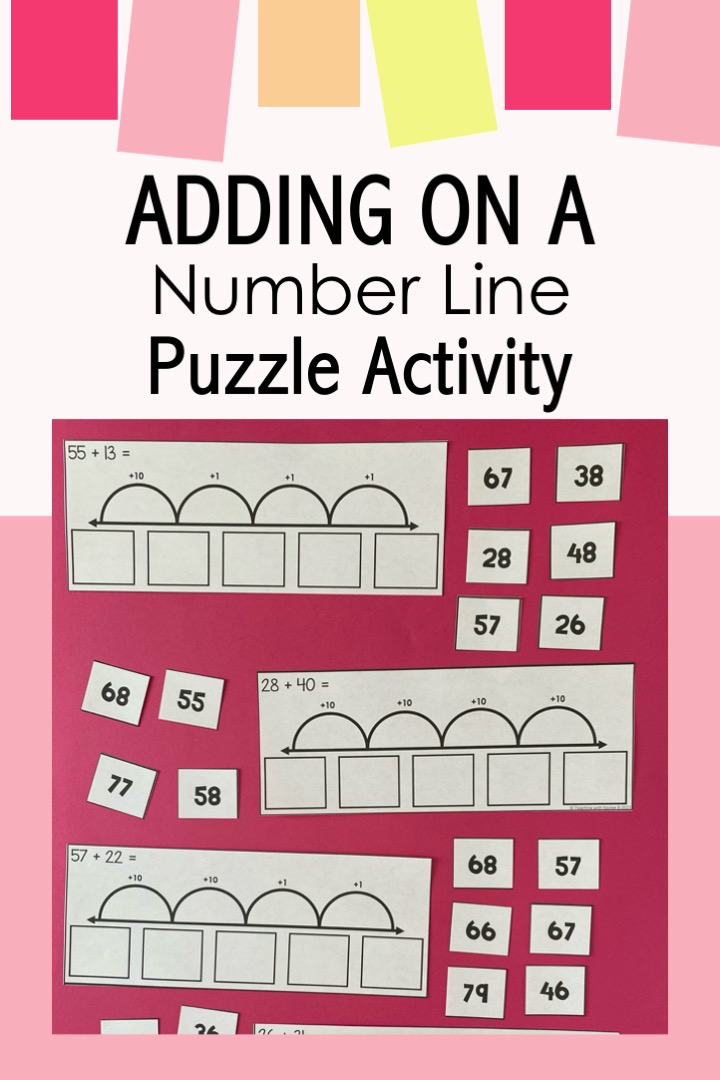
Get students hands-on practice with 2-digit addition on an open number line with this puzzle activity.
When students are finished with the puzzle, I have them raise their hands and I do a quick look over their work. Then students mix up the pieces, stack them up, and they are ready for the next set of students.
After that, I want to see how well students can add 2-digit numbers on an open number line. So I have them complete an exit ticket individually. This just has them solve a couple problems. It also has them rate themselves on how they think they understood the lesson. I look at these after school and take note of the students who could use some extra practice during centers.
And that’s how I teach my 2nd grade students adding on an open number line. It all comes down to helping them use patterns and getting them enough practice for them to be successful.
Find all of the materials and resources I use to teach this strategy here.
You can find these in a bundle with all of my 2-digit addition and subtraction strategies here.
For help teaching 3-digit addition on an number line, read this blog post here.
Learn more about teaching all of the 2-digit addition strategies in this blog post here.


